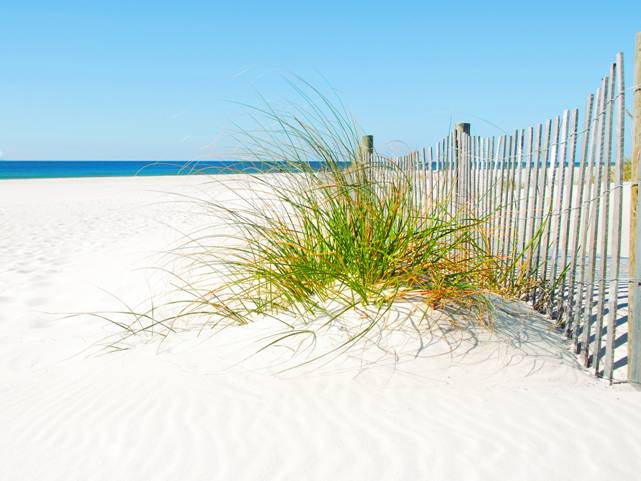
Salty Sam’s Fun Blog for Children
Number 153
The History of Toilets
Hello Everyone
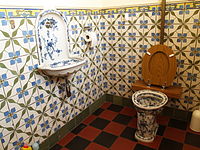
Once, my nephews asked me who invented the toilet. When l told them it was a man called Thomas Crapper they fell about laughing.
Actually, the word they were thinking of is hundreds of years old and was used before Thomas Crapper started selling toilets.
Well of course he wasn’t really the first person to make a toilet because people couldn’t wait until 1861 – this is when Thomas Crapper first set up his famous workshops – to use one!
John Harrington actually invented the modern flushing toilet as far back as 1596. He was the godson of Queen Elizabeth l. She was very impressed with the invention, but surprisingly, it didn’t catch on. Most castles still used garderobes positioned above brick lined channels that ran under the building. These drains were often kept clear by small boys who made sure the sewage could flow easily into a nearby river.
A garderobe was a usually a plank of wood with one or more holes in it inside a room away from other rooms. Clothes were kept here because moths didn’t like the smell and kept away from the woollen garments.
ln 1775, the flushing toilet was reinvented by a watchmaker called Alexander Cummings – nearly 200 years later after John Harrington’s one!
Thomas Crapper was a man who developed bathrooms, being a plumber by trade, especially the function of the ballcock, which helps to regulate the filling of the water cistern at the back of the toilet.
He opened a showroom selling baths, wash basins and toilets in the King’s Road in Chelsea, London which remained open until 1966. The wares that he sold were made in his own factory and were such good quality that they were bought by royalty from the late 1800s. His products were installed at Sandringham (one of the Royal estates).
But if we go back to the beginning…
Apparently, a flush toilet was found in a palace on the Mediterranean island of Crete that was over 2,800 years old. The Romans who had indoor plumbing constructed their toilets directly over sewer channels so that the water running underneath could flow away straight into rivers carrying waste with it.
The Saxons lived a more basic life, and just used a very deep pit that we call a cesspool or cesspit.
Some mediaeval and Tudor houses had toilets that were tiny rooms built out of the side of the houses with an opening at the base positioned over a pit. They looked like little boxes sticking out of the wall. On the old London Bridge these chambers would be positioned over the river. lnside these rooms was a garderobe.
ln crowded towns through the Middle Ages and through Tudor times, chamber pots were used and emptied straight into the street. There were channels in the middle of the street which acted as open drains. People were supposed to call out before they tossed the contents out of the window and others were employed to come and clear the mess away, usually in the night. These men were called night-soil men.
Otherwise, toilets were earth closets located in a building or shed separate from the house. The waste drained into the soil or even a brick cesspit but eventually night-soil men would need to empty these too.
ln the 1700s, the pots were often kept in the sideboard in the dining room, used behind a screen and emptied into a cesspit in the garden. These pits gave off poisonous gases.
ln the 1800s, people were beginning to realize that this was an unhealthy way to live; especially when the cities became overcrowded and up to 100 people could be sharing one loo! The sewage would overflow and could contaminate drinking water supplies. lt was safer to drink wine or beer and even children used to drink these.
(By the way, the word loo is thought to probably come from the French l’eau which means ‘the water’ and relates to the term ‘water closet’ which is an old name for toilet.)
The sewage was being dumped into rivers along with waste from factories and sometimes even dead animals would be thrown in there too. Taking drinking water from these rivers caused outbreaks of disease.
ln 1858 in London, there was a heat wave which caused what was known as the ‘Big Stink’. Parliament, situated by the river, hung cloths up at the windows to try and keep the smell out, but it was no good.
lt was decided that a new sewage system had to be built and the sewage taken out of London to be disposed of properly. This is when the embankments were built along the Thames in order to accommodate the new drains. The river became narrower, faster-flowing and cleaner, and outbreaks of cholera and typhoid stopped.
ln Victorian times, toilets were very often built in separate buildings at the end of the back yard to keep them out of the house.
A toilet at this time was called a privy. ln fact, indoor toilets weren’t incorporated into all houses until after the middle of the 2oth century. Any outside toilets are now called ‘gardeners’ toilets’! ![]()
There are still 40,000 outside toilets in Britain today.
Toilet paper was invented in 1857, and coloured toilet paper was invented in 1957. Before that people used leaves, sponges, cloths or feathers. The Romans used a sponge on a stick that they shared with others!
Bye bye everyone – don’t forget to subscribe to my blog!
lf you like my blog, please support it by telling all your friends and followers about it.
Thank you!
And see you again next Fun Friday!
Love and kisses
Salty Sam

www.christina-sinclair.com

Bill and Bob’s Joke of the Week![]()
![]()
Bill: What did one toilet say to the other toilet?
Bob: l don’t know. What did one toilet say to the other toilet?
Bill: lt said, “What’s the matter? You’re looking a bit flushed?”

Salty Sam © Christina Sinclair 2015
Unauthorized use and/or duplication of material from this blog without express and written permission from this blog’s author and owner is strictly prohibited.
Links may be used to www.christina-sinclair.com

Picture Gallery

Roman toilets
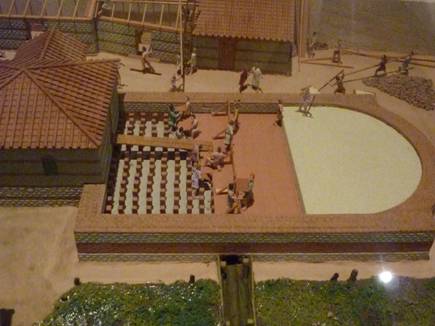
Romans were into communal living with public baths and toilets
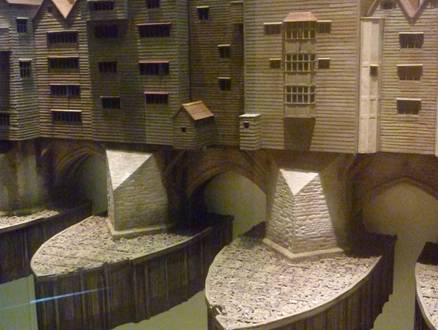
Mediaeval toilets on the old London Bridge
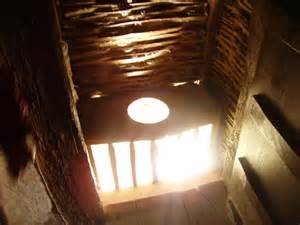
Mediaeval toilet
(It is built into an outside wall and is overhanging the garden)
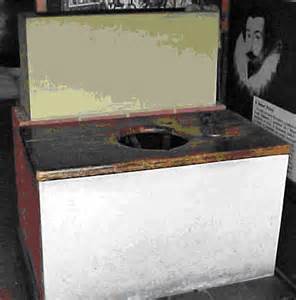
A Tudor toilet (John Harrington)
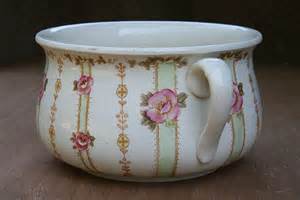
A chamber pot
(A chamber is a room)
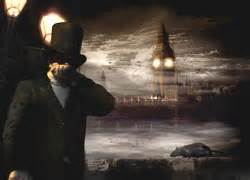
The Big Stink 1858
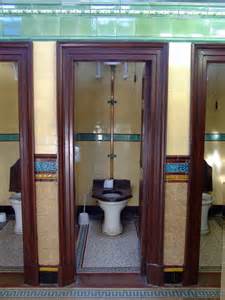
Victorian toilets
(Can still be in use)
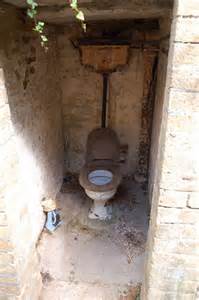
An outside toilet
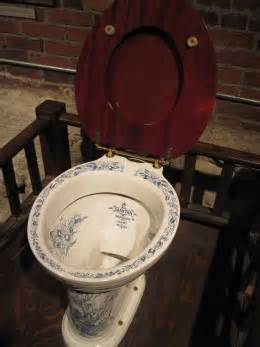
Thomas Crapper bathroom ware was top quality
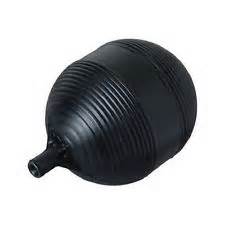
A ballcock float sits on the water inside a toilet cistern
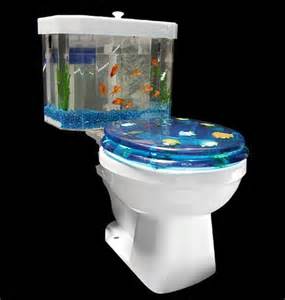
A modern novelty toilet including animals in the cistern
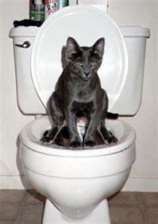
In modern times even animals have taken to using toilets
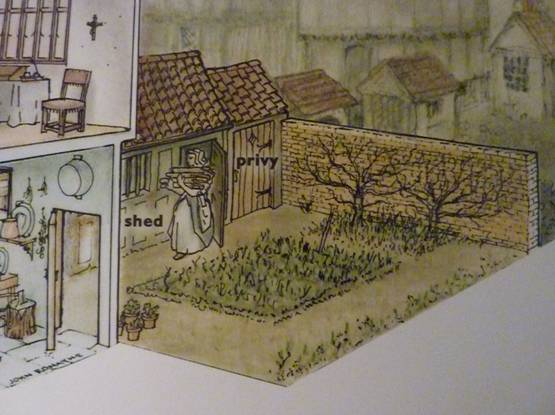
Before indoor toilets, the toilet was called a privy and was located away from the house in a separate shed
There are about 40,000 of these left in Britain
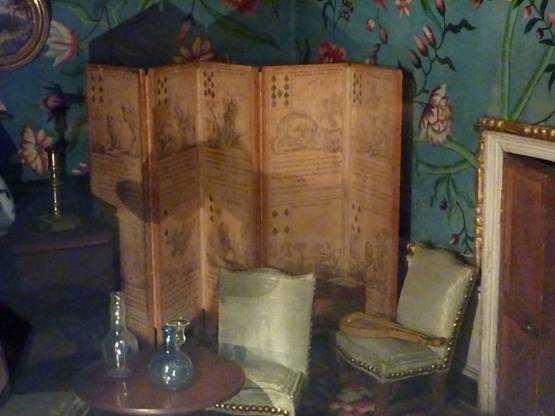
The Georgians of the 18th century had pots behind screens in their living rooms
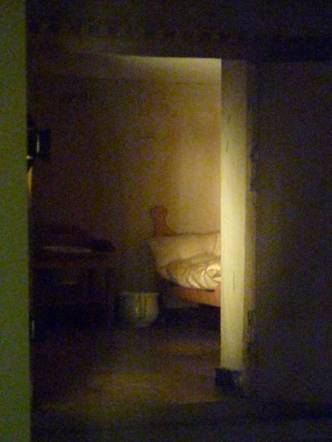
The night facilities of a servant in the mid-18th century – a chamber pot
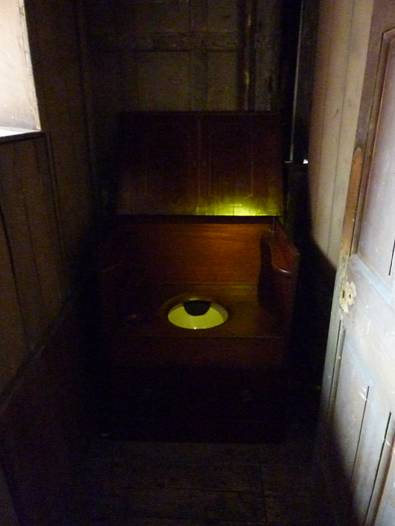
A Georgian privy Kew Palace 18th century
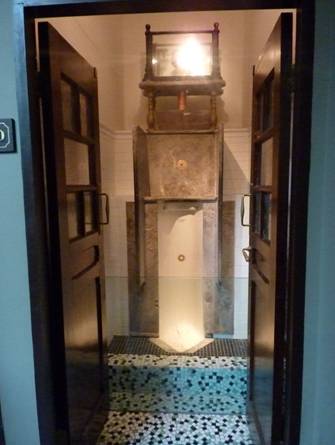
A Victorian men’s urinal
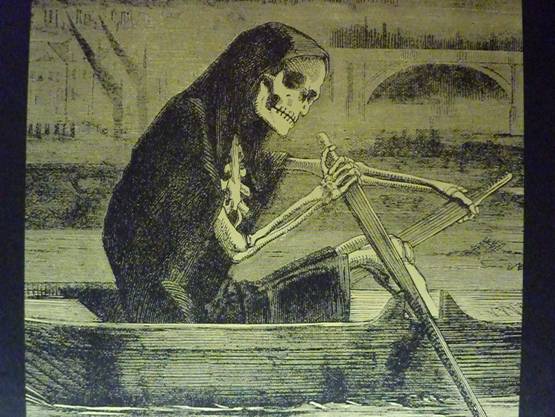
A cartoon from Punch magazine making a comment about the dangerous state of the River Thames
at the time of the Big Stink – it is entitled The Silent Highwayman
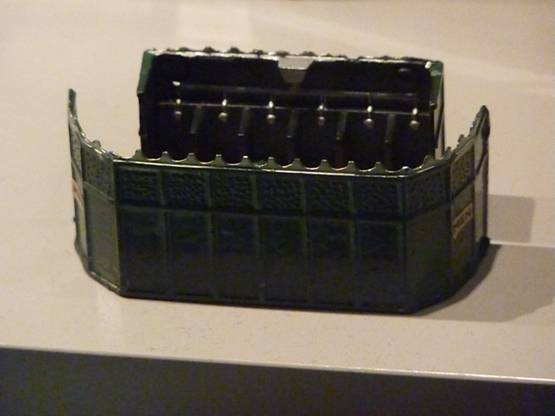
A model of public facility of the 1930s
This men’s urinal would have been placed in the street

 THE SALTY SAM NEWS DESK
THE SALTY SAM NEWS DESK

Bill and Bob were telling me this week about a boy in their class called Roger. He is a bit of a wit.

Once, when their teacher Miss Pringle asked where the Vikings had landed he piped up from the back of the class – ‘Heathrow?’
![]()
This week Miss Pringle was talking about God. She asked the class if they knew where God lived. She was expecting them to say in heaven or something like that.
Roger said that he thought it was in his bathroom.
“Why do you say that Roger?” asked Miss Pringle.
“Well, because my dad is always standing outside our bathroom door saying – ‘Oh God! Are you in there again?’ ”
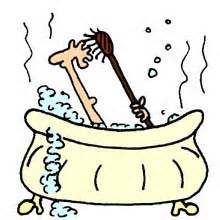

*********************
TO ADVERTISE ON THIS BLOG
PLEASE CONTACT:
christina.sinclair.ads@aol.co.uk
*********************


Crafty Tip
This is how you make a bath bomb.
This would make a lovely present for somebody. There ideas for present boxes on Blog Posts 15 and 151. You can buy your ingredients in the baking section of the supermarket.
lf you have sensitive skin, you might like to wear rubber gloves when you start pressing the mixture into the moulds.
lngredients
2 cups baking soda (also known as bicarbonate of soda)
1 cup citric acid
1 teaspoon water
1 teaspoon skin safe essential/perfumed oil (for people not candle-making)
3 tablespoons light vegetable oil/almond oil/olive oil (don’t use nut oil for people with nut allergies)
3-4 drops of food colouring (red and yellow make peach, red and blue make mauve)
Don’t put too much dye in your bombs otherwise you will stain your bath.
- Put your first four dry ingredients into a glass or metal (not plastic) bowl and stir them really well with a wooden spoon pressing out all of the lumps (or sift them from one bowl to another backwards and forwards because the mixing must be done well to get a good result).
- Put the next four wet ingredients into a jar or squirty bottle. Screw the lid on securely and give it a good shake.
- Drip or squirt your wet ingredients to the dry very slowly as you stir – no more than a teaspoon at a time. lf the mixture starts to foam, you are adding the liquid too quickly!
- When all the liquid has been mixed in, you should have something that looks like a wet sand and will clump together when you squeeze it in your hand.
- lf you have a bath bomb mould, fill each half with the mixture piled up slightly in the centre or use a case from a Kinder toy for a smaller bomb.
- Press the two halves together (without twisting) so that the mixture is tightly packed inside – then release it again by opening then tapping the mould gently.
- Put the bombs inside nests of tissue paper (to stop the bombs getting flat bottoms) and then on a tray to dry for about 4 hours (not in direct sunlight).
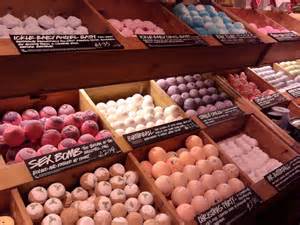
You can use other moulds like chocolate moulds but if they have a picture of some sort in them let the bath bombs dry inside the moulds – the mixture must be pushed in tightly. Bath bombs don’t have to be round, they can be heart/rose/star-shaped – or any shape you want.
Store your final results in an air-tight container and use within a few weeks – you must not let moist air get to them otherwise you won’t get a proper explosion effect in your bath. When you wrap them up to give to people wrap them in tissue paper to keep them dry.
TlPS
lf you want to put some dried flower heads in your bath bomb like lavender for example, just use a pinch – you don’t want to block the bath plug hole up!
lf you get good at making bath bombs, you could try making two-coloured ones. Make up two batches with different colours and pack the mixture into the moulds in layers.
lf you make little ones (in the shape of flowers for example), you could package them up in sweet papers in your presentation box – but warn the person you give them to that they are not for eating!
![]()
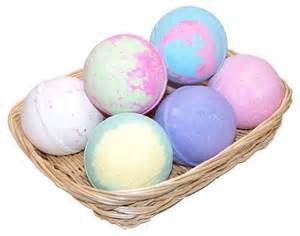
BLOW MY FOGHORN!!!
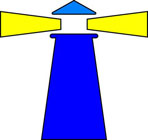
PLUS
Salty Sam fans can join in with their comments and share them with children all over the world. You will need to ask permission if you are not an adult.
Enter your e-mail address to subscribe to my blog and receive new Salty Sam Blog Posts for free by e-mail every week. Your address will be kept private and will not be shared with any third party.
Sign me up at the side bar



lt’s the Weekend!
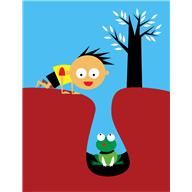
BATHROOM WORDSEARCH
|
D |
G |
H |
U |
I |
O |
K |
G |
H |
B |
D |
T |
G |
V |
C |
F |
R |
I |
K |
|
J |
Y |
H |
G |
T |
U |
I |
J |
K |
O |
L |
P |
H |
F |
C |
V |
R |
D |
F |
|
G |
T |
Y |
H |
U |
J |
I |
K |
O |
G |
H |
V |
C |
X |
Z |
A |
S |
E |
W |
|
D |
T |
G |
I |
K |
B |
K |
L |
O |
K |
J |
N |
M |
B |
V |
G |
T |
Y |
Y |
|
H |
N |
N |
U |
R |
U |
B |
B |
E |
R |
D |
U |
C |
K |
K |
M |
N |
B |
V |
|
F |
D |
C |
V |
B |
B |
N |
H |
J |
O |
O |
L |
K |
J |
H |
G |
Y |
U |
J |
|
L |
K |
J |
H |
N |
B |
B |
N |
H |
G |
T |
F |
R |
H |
I |
J |
N |
H |
I |
|
K |
O |
S |
K |
F |
L |
A |
N |
N |
E |
L |
L |
J |
N |
H |
Y |
G |
F |
V |
|
B |
V |
P |
X |
X |
E |
X |
Z |
S |
F |
H |
J |
I |
K |
T |
B |
P |
L |
J |
|
T |
O |
O |
T |
H |
B |
R |
U |
S |
H |
H |
B |
V |
S |
O |
A |
P |
N |
F |
|
V |
C |
N |
X |
X |
A |
O |
O |
J |
N |
B |
B |
V |
C |
W |
T |
V |
B |
H |
|
P |
O |
G |
I |
K |
T |
O |
O |
T |
H |
P |
A |
S |
T |
E |
H |
N |
B |
V |
|
G |
F |
E |
G |
H |
H |
B |
J |
K |
M |
N |
S |
V |
C |
L |
L |
I |
U |
O |
|
L |
K |
J |
G |
Y |
F |
D |
V |
H |
U |
B |
I |
V |
C |
D |
X |
C |
V |
G |
|
T |
R |
F |
D |
C |
G |
V |
H |
U |
J |
B |
N |
N |
G |
F |
D |
C |
X |
Z |
|
A |
S |
W |
E |
Q |
R |
W |
Q |
S |
D |
F |
G |
T |
H |
Y |
F |
D |
E |
R |
|
S |
F |
V |
C |
B |
H |
F |
Q |
Y |
H |
B |
N |
K |
P |
O |
F |
U |
N |
J |
|
G |
D |
S |
H |
G |
F |
D |
L |
O |
K |
M |
F |
Q |
A |
Z |
K |
J |
H |
G |
|
F |
D |
C |
H |
V |
Q |
A |
L |
I |
J |
H |
G |
F |
R |
T |
D |
F |
G |
V |
TOOTHBRUSH TOOTHPASTE
BATH BASIN
SOAP SPONGE
FLANNEL BUBBLE BATH
TOWEL RUBBER DUCK
Answers next week…
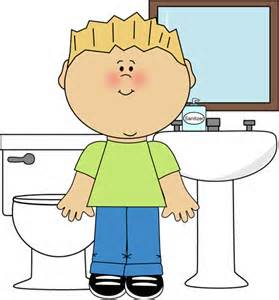
Please note that the material on this blog is for personal use and for use in classrooms only.
It is a copyright infringement and, therefore, illegal under international law to sell items made with these patterns.
Use of the toys and projects is at your own risk.
©Christina Sinclair Designs 2015

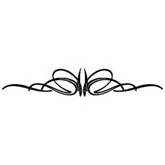

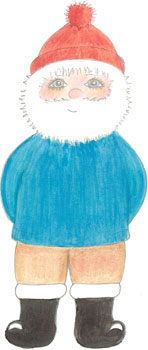
Season’s Greetings and Best Wishes to you and your family
Thank you very much and the same to you!
God Bless you this Christmas season
Wishing you Happiness and Good Cheer this Christmas
Thank you so much, and the same to you both!
Wow, this was awesome. Keep writing this kind of texts, you will get a lot of people to this blog.
Thank you Beverley!